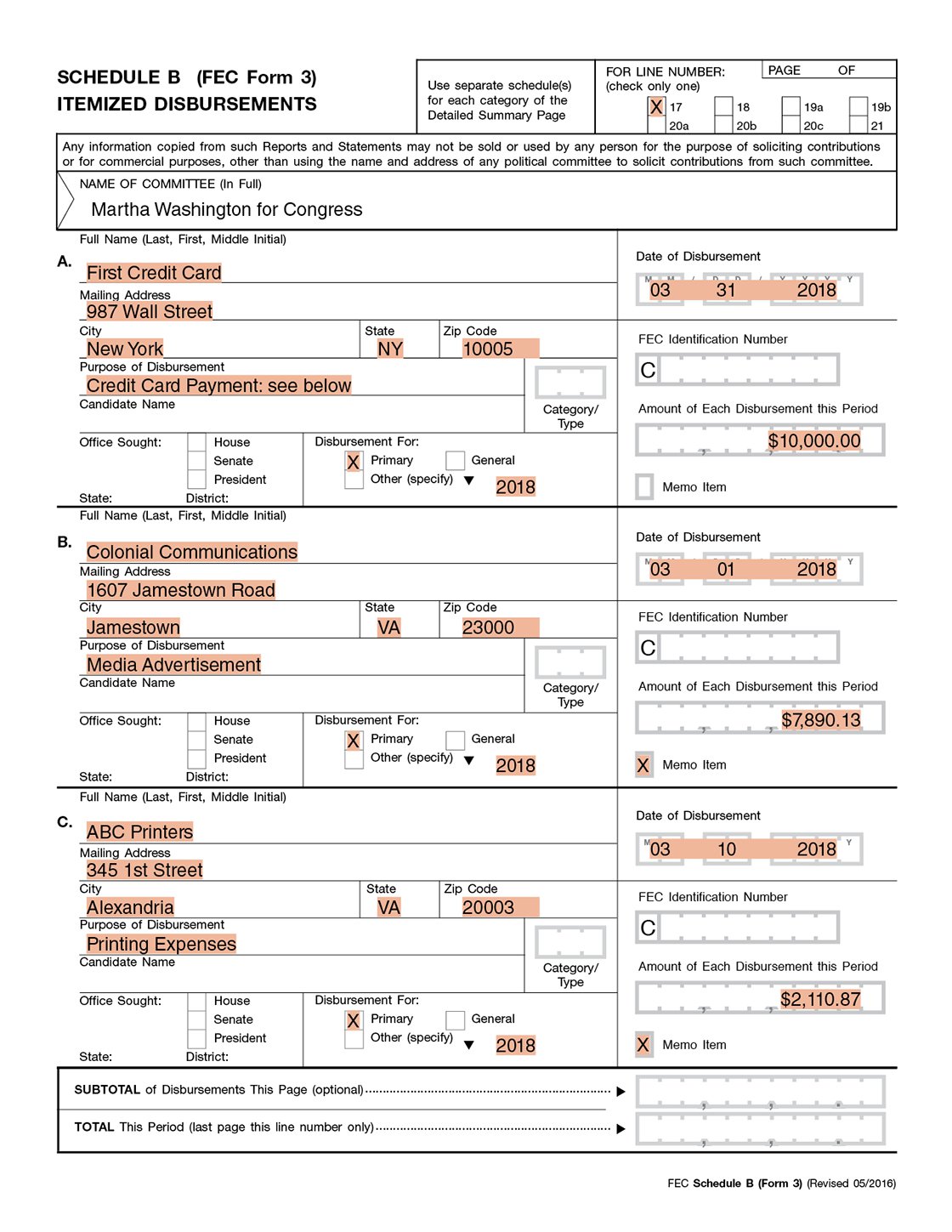Credit card disbursements
Committees can pay for operating expenditures by charging a committee credit card.
Reporting on candidate forms
Reporting credit card payments
House and Senate committees report operating expenditures that were charged to a credit card in the “Operating expenditures” category on Form 3, Line 17. Committees must itemize the credit card payment if payments exceed the $200 aggregate threshold during the election cycle.
The committee must also itemize, as a memo entry, any specific transactions charged on a credit card if payments to the actual vendor exceed the $200 aggregate threshold. The memo entry must include the name and address of the vendor, the purpose of the disbursement, date the services were received, and the amount of the disbursement.

The committee reports paying First Credit Card on Line 17, and includes the credit card company's address, the date that the credit card was paid, the amount that was paid, and the purpose of disbursement "Credit Card Payment: see below."
Next, the committee includes memo entries for its original vendors, Colonial Communications and ABC Printers. The memo entries show the vendors' addresses, date the services were received, and the amount paid. Both memos also show clear purposes of disbursement - "Media Advertisement" and "Printing Expenses" - so that the public knows why the funds were spent.
Reporting credit card debt
House and Senate committees report credit card debt in the “Other debts owed by the committee” category on Form 3, Line 10.
Debts must be itemized on Schedule D supporting Line 10 once:
- A debt of $500 or less has been outstanding 60 days from the date incurred (the date of the transaction, not the date the bill is received). The debt is disclosed on Schedule D of the next regularly scheduled report if it is not paid by the closing date of that report.
- A debt exceeds $500. The debt must be reported on Schedule D of the report covering the date on which the debt was incurred if it is not paid by the closing date of that report.
When reporting credit card debt on Schedule D, include information about the credit card company, along with the amount owed at the opening of the reporting period, the amount of the debt incurred this reporting period, the amount paid on the debt this period, and the amount outstanding at the end of the reporting period.
If the committee does not pay the credit card debt, the debt must be continuously on Schedule D until it is repaid.
Note: Regularly recurring administrative expenses such as rent, utilities and salaries are not considered to be debts until they are past due.
Reporting with FECFile
To enter a credit card payment, go to the Summary Page tab, right click on “Line 17 Operating expenditures” and select “new.” To add memo entries for the vendors, right click on the credit card payment, select “Transaction Split.” Enter each vendor by clicking “add new.”
To enter a credit card debt, got to the Summary Page tab, double click on “Line 10 Other debts owed by the committee” and enter the debt.
